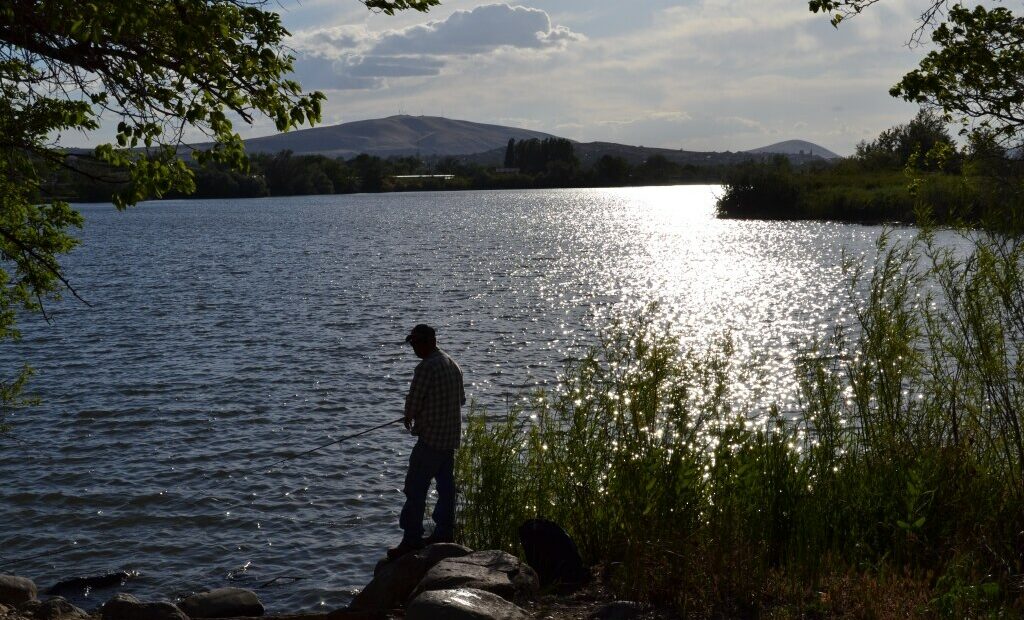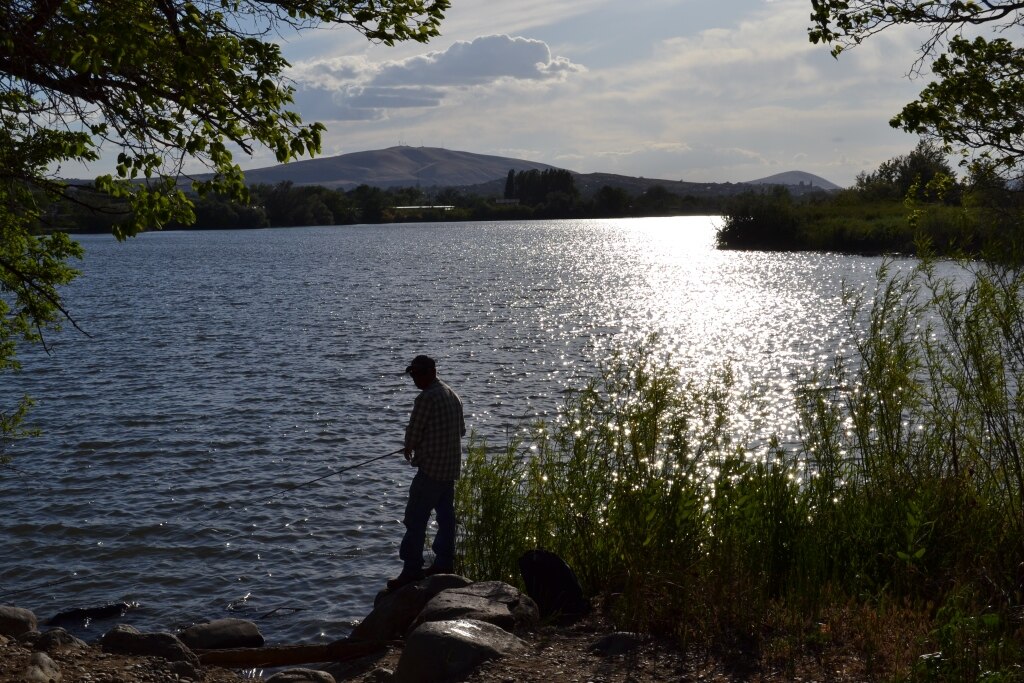
To help salmon on the Yakima River, causeway to be removed at Bateman Island

Listen
(Runtime 0:56)
Read
Removing a small causeway in the Tri-Cities could have big impacts for salmon, according to years of study by the U.S. Army Corps of Engineers, the Washington Department of Fish and Wildlife and the Yakama Nation.
Just downstream of the mouth of the Yakima River, Bateman Island is popular with birders and hikers. People experiencing homelessness in the Tri-Cities have also sometimes camped out on the island.
It’s uncertain how the Bateman Island causeway came to be, said Mike Livingston, the south-central regional director for the Washington Department of Fish and Wildlife.
“We have suspicion that it was built by the Bateman family that farmed out there many years ago. It was built between 1939 and 1940, prior to any environmental review or legal requirements,” Livingston said.
But the unapproved man-made land bridge that connects Bateman Island to the shore causes problems for salmon.
“It was evident this year when you saw 50, 60 adult sockeye that died in that causeway because of the conditions that exist there,” said Joe Blodgett, with Yakama Nation Fisheries.
The causeway catches water spilling out of the Yakima River into the Columbia River. The water heats up — sometimes reaching as high as 90 degrees, creating a prime habitat for predatory fish and prime conditions for algal blooms and summertime mosquitoes.
“Removing the causeway is going to improve the flows around the south end of the island, allowing both the cooler water of the Columbia River and the Yakima River to mix and improve those conditions,” Livingston said.
The project could cost $13.2 million. Fish managers say removing the causeway will help other salmon restoration efforts on the Yakima River succeed.
Take a newly built fish passage facility at Cle Elum Dam, Livingston said. The more than $200 million project will allow sockeye salmon to exit the reservoir for the first time since the 1930s. Those fish must swim past the Yakima River Delta.
“The success of the facility, and many other efforts that we have going, are partially dependent on fish safely passing through the Yakima River Delta. Removal of the causeway is key to the success of our overall efforts here in the (Yakima) Basin,” Livingston said.
Recreationalists have complained about losing access to Bateman Island. However, people can swim or boat ashore.
In addition, sockeye fishing for tribal and nontribal members will improve with habitat restoration, said Phil Rigdon, the Washington Department of Natural Resources superintendent for the Yakama Nation.
“We foresee that we could have a pretty significant sockeye run coming up the Yakima (River),” Rigdon said. “They’ll wait at the mouth of the Yakima River before they come up the river. They’ll be opportunity for respectful fishing.”
Design and implementation will start in early 2025. It’s uncertain when removal of the causeway will begin, although it will likely happen in wintertime to avoid salmon migration.















